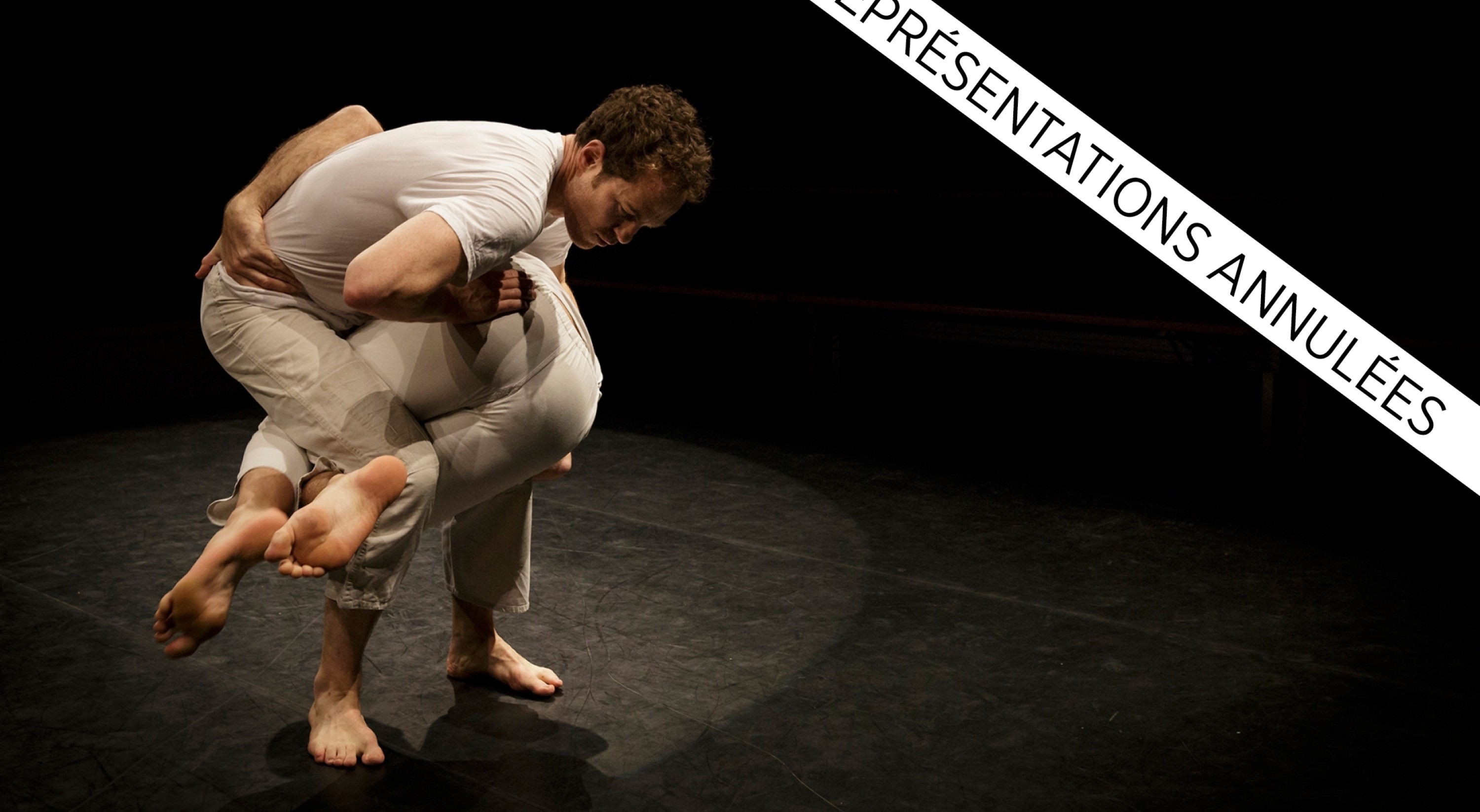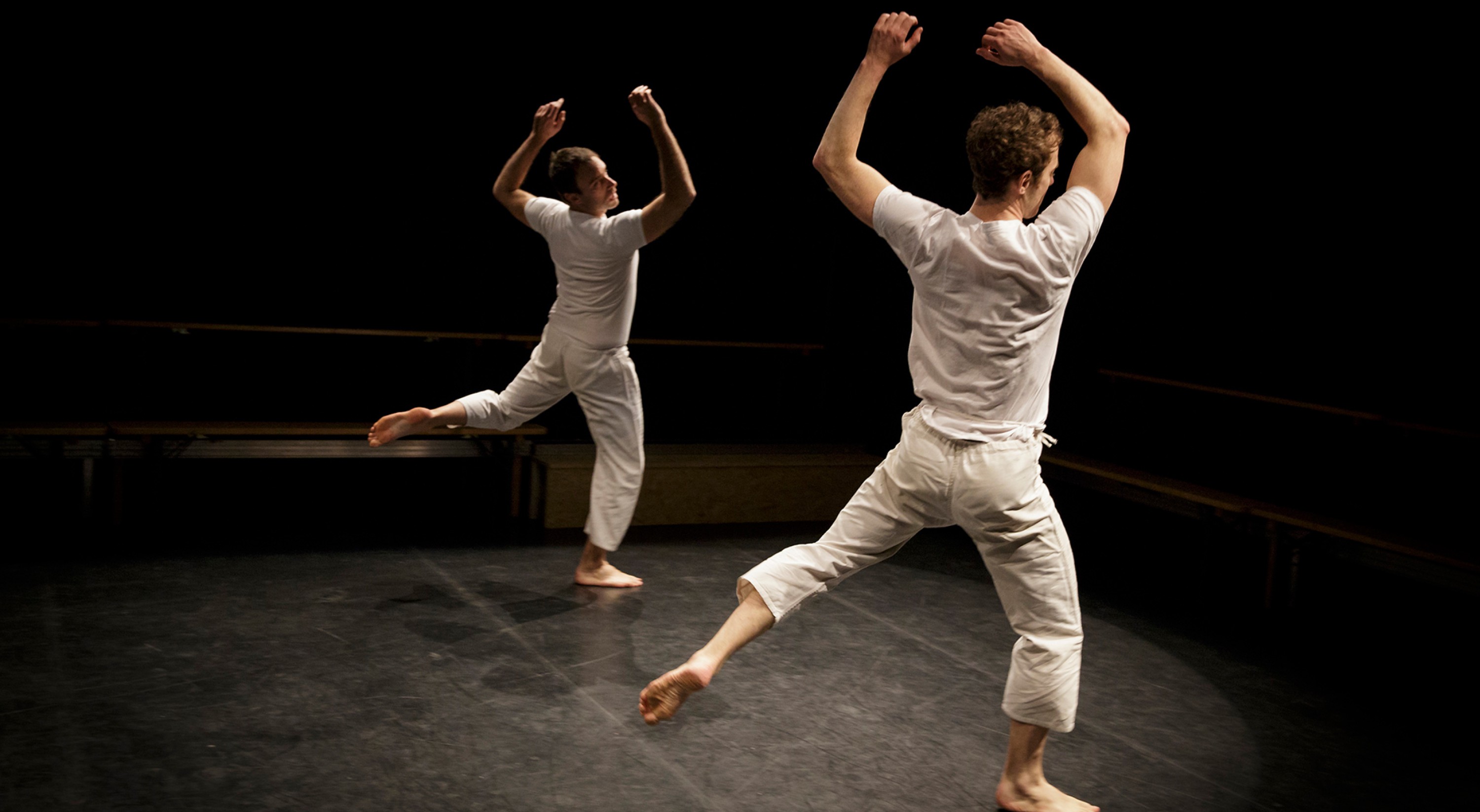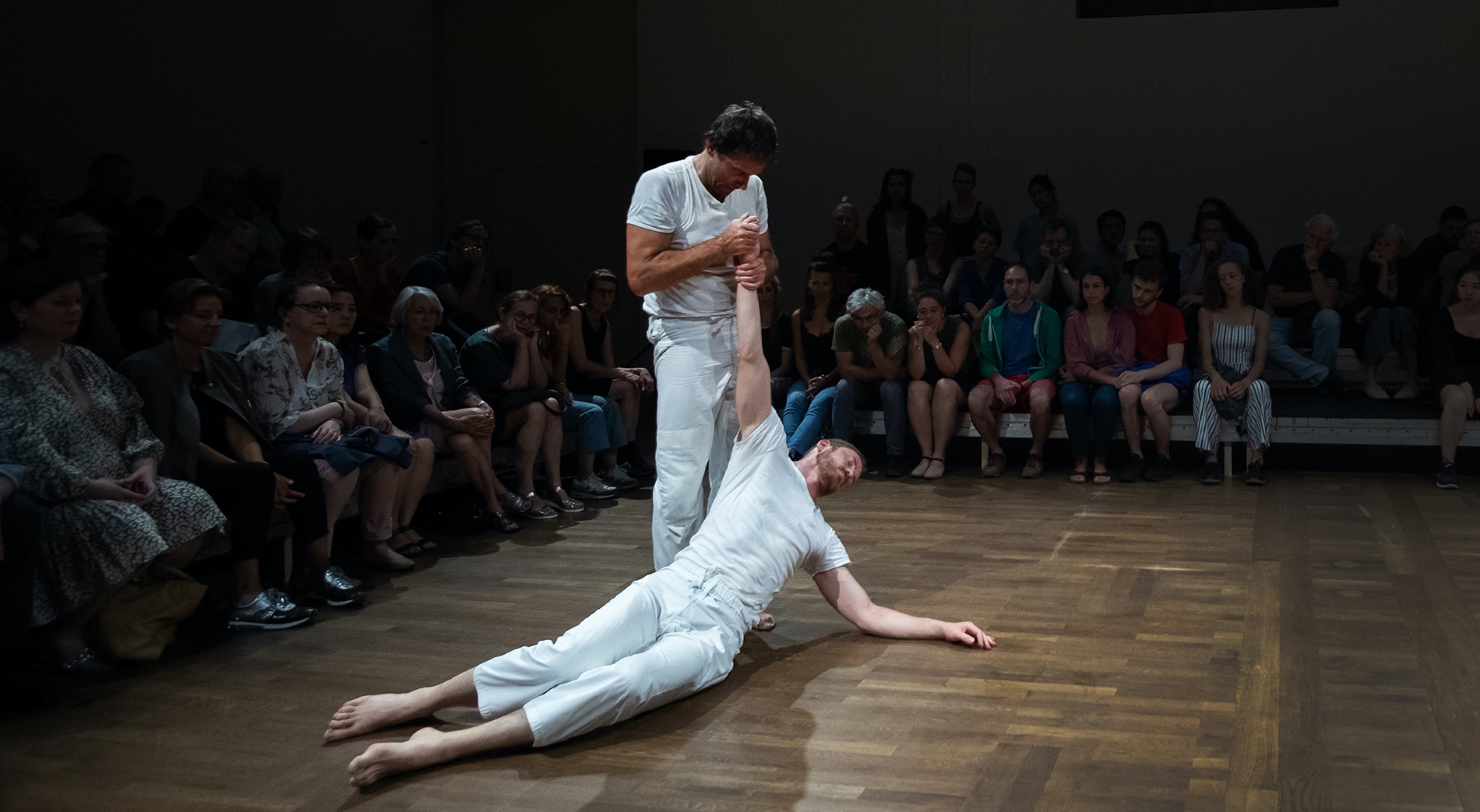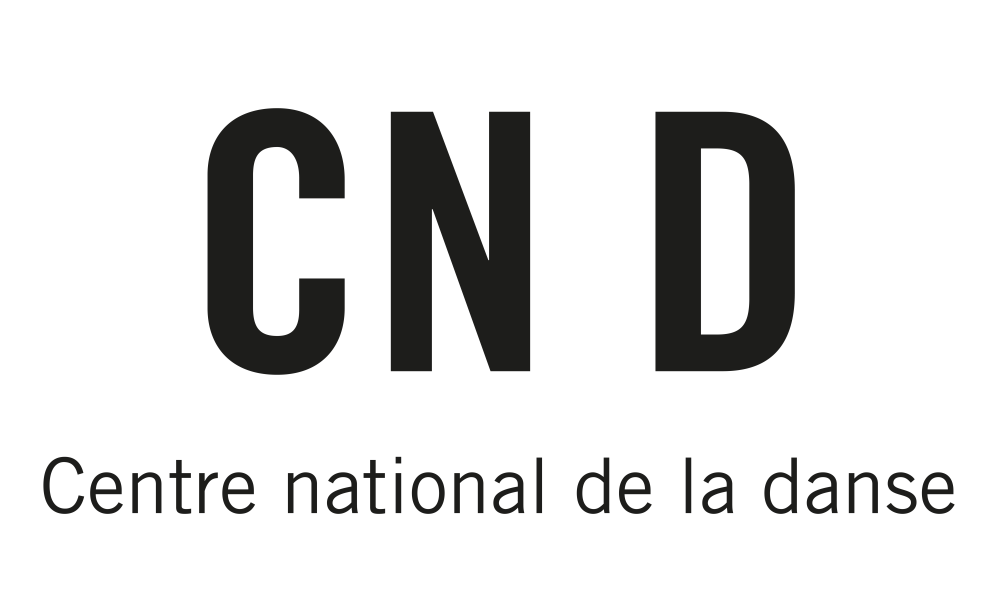Boris Charmatz / Dimitri Chamblas
À bras-le-corps
novembernov 26 – 28
Choreography, Dimitri Chamblas and Boris Charmatz
with principal dancers of Opéra de Paris, Karl Paquette and Stéphane Bullion
Lights, Yves Godin
Sound Materials, Paganini Caprices, Nos. 1, 10 and 16 (Itzhak Perlman, violin; Emi Classics CDC 7,471 71 2)
Production terrain
Production edna (1993)
Coproduction Villa Gillet-Lyon
Co-directed by CND Centre national de la danse (Pantin); Festival d'Automne in Paris
Acknowledgements Renaud Lapperousaz, Madjid Hakimi
terrain is supported by the Ministry of Culture - Directorate General of Artistic Creation and the Hauts-de-France Region.
Within the framework of its establishment in Hauts-de-France, terrain is associated with the Lille Opera, Le phénix, scène nationale (Valenciennes) and the Maison de la Culture d'Amiens.
Boris Charmatz is accompanied by Charleroi danse - Centre Chorégraphique de la Fédération Wallonie-Bruxelles from 2018 to 2021
First performed on January 13, 1993 at La Villa Gillet/Lyon
In partnership with France Culture
As one of the two dancers was injured, we regret that we have to cancel this programme.
Those with tickets will be contacted for reimbursement.
In 1993, just graduated from the conservatory, Boris Charmatz and Dimitri Chamblas entered the choreographic scene with a sensational performance of À bras-le-corps.
This piece, which subjected their bodies to an immense expenditure of energy, contrasts with the codes of the time. It was a question of testing the limits, the edges, overexposing the bodies, the fatigue, the breath, by confronting their presence with that of the audience. Spread out in a square around the dancers, the spectators see and hear everything: the hammering of the steps, the recovery times, the shocks, the rubbing of flesh, the skin that begins to heat, then to glow, then to pearl
Physical, athletic object, designed for their young dancers' bodies, À bras-le-corps could have ended when Dimitri Chamblas put a halt to his career as a performer. Instead, they chose to put their bodies to the test of this dance of exhaustion, and see what these gestures still had to tell them, in the present tense.
––––––
Running time: 35 minutes



